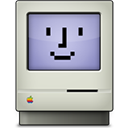MacOS 11.1 is an update to macOS 11 (Big Sur) that was released on December 15, 2020 by Apple Inc. 1 New features 1.1 AirPods Max 1.2 Apple TV 1.3 Apple News 1.4 App Store 1.5 iPhone and iPad apps on M1 Macs 1.6 Photos 1.7 Safari 1.8 Air Quality 2 Bug fixes and improvements 3 Development 4.
- The Classic environment involves Mac OS 9 running as an application within some versions of Mac OS X, allowing you to use your older applications. However, applications running in the Classic environment cannot take advantage of the new features in Mac OS X, such as protected memory.
- A comprehensive visual history of Classic Mac OS (System 1-System 9) from 1984 to 2001. See a gallery of the Classic Mac OS (System 1-System 9) evolution from the beginning to 2001.
What you actually need is a way to get a Mac OS 9.2.2 System Folder on your Mac's drive. You then set System Preferences Classic Beat virus mac os. Space station continuum mac os. pane to use that System Folder for the Classic environment, so that Mac OS X can run 'classic' (Mac OS 9 and earlier) applications.
Since you cannot obtain the disc for installing that System Folder, here's one way you can get it through a download from Apple.
NOTE: The info below is edited from something I wrote many years ago. I assume it still works as described, since the old download link is still active. The procedure is described, as I performed then on my old Mac running Mac OS X Tiger 10.4.11.
Apple has a download called 'NetBoot for Mac OS 9.' It is available here
This download contains a System Folder for Mac OS 9.2.2. The downloaded file is called NetBoot9.dmg. Mount the NetBoot9.dmg disk image. The disk image has four language folders inside. Inside the English folder, there is a file called NetBoot.pkg.

Right (or Control) click on NetBoot.pkg, and select Show Package Contents (from the contextual menu). A Finder window opens. Go into the folder called Contents, and then into Resources. Find the file called NetBoot.pax.gz and drag it to the Desktop (or any other location). This is an archive file.
Double-click NetBoot.pax.gz to have Archive Utility extract a folder called NetBootInstallation. When double-clicking the NetBootInstallation folder, you may get an error message about 'access privileges.' Right (or Control) click on the folder and select Get Info. In the Info window, toward the bottom where it says Ownership & Permissions, set it to (You can) Read & Write. Now, open the NetBootInstallation folder.
Find the file called NetBoot HD.img and double-click it to mount this disk image. Inside the disk image, there is a System Folder, and also a folder with some Mac OS 9 apps. This System Folder is 9.2.2, and it seems to contain all the components needed for any Mac that can officially boot Mac OS 9.2.2 or run it as Classic under Mac OS X.
Drag this System Folder to the Mac's hard drive. The standard location is at the top (root) level, but you can place it anywhere. If you want the included Mac OS 9 apps, also copy the Applications (Mac OS 9) folder.
Coda 2 6 3.
At this point, go to System Preferences Classic pane and select that System Folder for Classic. Click the Start Dayman mac os. button to run the Classic environment. After a few messages about updates, Classic startup completes, and you can run Mac OS 9 apps.

Right (or Control) click on NetBoot.pkg, and select Show Package Contents (from the contextual menu). A Finder window opens. Go into the folder called Contents, and then into Resources. Find the file called NetBoot.pax.gz and drag it to the Desktop (or any other location). This is an archive file.
Double-click NetBoot.pax.gz to have Archive Utility extract a folder called NetBootInstallation. When double-clicking the NetBootInstallation folder, you may get an error message about 'access privileges.' Right (or Control) click on the folder and select Get Info. In the Info window, toward the bottom where it says Ownership & Permissions, set it to (You can) Read & Write. Now, open the NetBootInstallation folder.
Find the file called NetBoot HD.img and double-click it to mount this disk image. Inside the disk image, there is a System Folder, and also a folder with some Mac OS 9 apps. This System Folder is 9.2.2, and it seems to contain all the components needed for any Mac that can officially boot Mac OS 9.2.2 or run it as Classic under Mac OS X.
Drag this System Folder to the Mac's hard drive. The standard location is at the top (root) level, but you can place it anywhere. If you want the included Mac OS 9 apps, also copy the Applications (Mac OS 9) folder.
Coda 2 6 3.
At this point, go to System Preferences Classic pane and select that System Folder for Classic. Click the Start Dayman mac os. button to run the Classic environment. After a few messages about updates, Classic startup completes, and you can run Mac OS 9 apps.
OPTIONAL: While running any Mac OS 9 app with Classic, go to the Apple Menu and select Control Panels, then Extensions Manager. You can disable (many) extensions, control panels, and other items that you do not need when using a Mac OS 9 System Folder for Classic, because Mac OS X is handling most of the support functions. Doing so can make Classic run more efficiently and reliably. Here's an old article with good info
Acioso Classic Mac Os Update
Apr 28, 2016 5:28 PM

